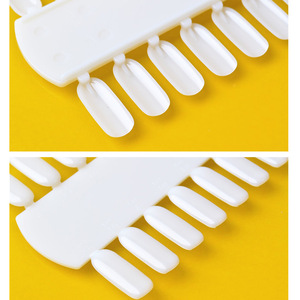
All categories
Featured selections
Trade Assurance
Buyer Central
Help Center
Get the app
Become a supplier

(829 products available)










































Nail size charts are handy tools for determining the right size for nail products, especially when shopping online or choosing from a wide variety of options. Nail size chart pdf lists different nail shapes and sizes for reference. Below are the different types of nail size charts.
Universal Size Charts
These charts provide general size guidelines that can be applied to different nail types. They usually have metric and imperial measurements for different types of nail products, such as:
These charts are best suited for users who may not have precise measurements but need a rough size estimate.
Custom Size Charts
Some brands offer size charts that provide specific measurements for their nail products. These charts help users find the perfect fit and often include detailed measurements for each nail type in length and width. These charts are ideal for users looking for tailored solutions to achieve a perfect fit.
Nail Shape Guides
Nail shape guides display different nail shapes and sizes, helping users select the shape they prefer. They show common shapes, such as squares, ovals, stiletto, and coffin. These charts are beneficial when choosing nail tips or gels to understand the various shapes and sizes available.
Interactive Online Tools
Some brands offer online tools to help nail enthusiasts find their nail size. Users input their measurements, and the tool suggests sizes and nail products. These tools often have charts showing measurements and corresponding sizes. Online shopping websites use these tools to provide a seamless shopping experience.
Measurement Guides
Measurement guide charts show how to measure nails using a ruler or nail sizer. The charts provide tips for getting accurate measurements and choosing the correct size. These are helpful for users who want to understand how to measure their nails for a proper fit.
Using a nail size guide chart is a straightforward process that can help users select the right size for artificial nails, nail art designs, or nail polish applications. Here are some simple steps to effectively use a nail size chart:
Determine Nail Shape and Length:
Decide on the preferred shape (square, oval, stiletto, etc.) and length (short, medium, long) for the nails. This will help narrow down the choices on the chart.
Measure Natural Nails:
Gently measure the width of each natural nail at its widest part using a nail measuring tool or a ruler. Note down the measurements in millimeters or inches.
Select the Closest Size:
Refer to the nail size guide chart and look for the measurement range that matches or is slightly larger than the measured widths. Take note of the corresponding size numbers or letters.
Nail Kits and Recommendations:
If using artificial nails or nail tips, pick the kit that contains the recommended sizes from the chart. Try fitting the nails on natural nails to check comfort and accuracy.
For Nail Art:
If doing nail art, use the selected size numbers/letters to find matching nail polish colors or nail decals that fit the chosen sizes.
Consider Adjustments:
If the selected artificial nails or nail tips are not a perfect match, slight adjustments can be made using a nail file to lengthen or shorten them as needed.
Finalize Selection:
Once the ideal size and shape of artificial nails or nail tips are determined, proceed with the application process or nail art design.
Regarding the product safety of nail size charts, it is important to consider the materials used to create them. Charts are generally made from safe and non-toxic materials, ensuring they can be handled and used without health risks. Reputable manufacturers adhere to strict safety standards, ensuring that nails, measuring tools, and other components do not contain harmful substances.
When choosing a nail size chart, opt for products from well-established brands known for their commitment to quality and safety. Look for charts that have received certifications or approvals from relevant authorities, indicating they meet safety requirements. Always read and follow usage instructions, and be aware of any potential allergies or sensitivities to specific materials to ensure a safe and pleasant nail care experience.
Q1: How can one determine the nail size?
A1: A size gauge kit can help determine the appropriate nail size. Users can try each nail and select the one that best fits and feels most comfortable. Alternatively, they can measure their nail width using a nail measurement template or PDF and then compare the measurements to a size chart.
Q2: How accurate are size charts?
A2: Size charts provide an estimate of the appropriate size based on width and length measurements, but they may not guarantee a perfect fit. Individual preferences for nail style and shape can also influence the choice of size, so users should consider these factors when selecting their size and feel free to adjust based on personal preference.
Q3: What is the difference between nail length and width?
A3: The length of the nail measures how far the nail goes from the fingertip or the toe, while the width measures how wide the nail is from one side to the other. Depending on the shape or style the user wants, they can adjust the length or width to choose a size that feels comfortable and looks good.
Q4: Can users resize press-on or acrylic nails?
A4: Yes, users can resize longer press-on or acrylic nails by carefully filing them down to the desired size. They can use a nail file to shorten the length or gently squeeze the sides to adjust the width. Resin or glue can be used to refix them once they have been reshaped to fit according to personal preference.